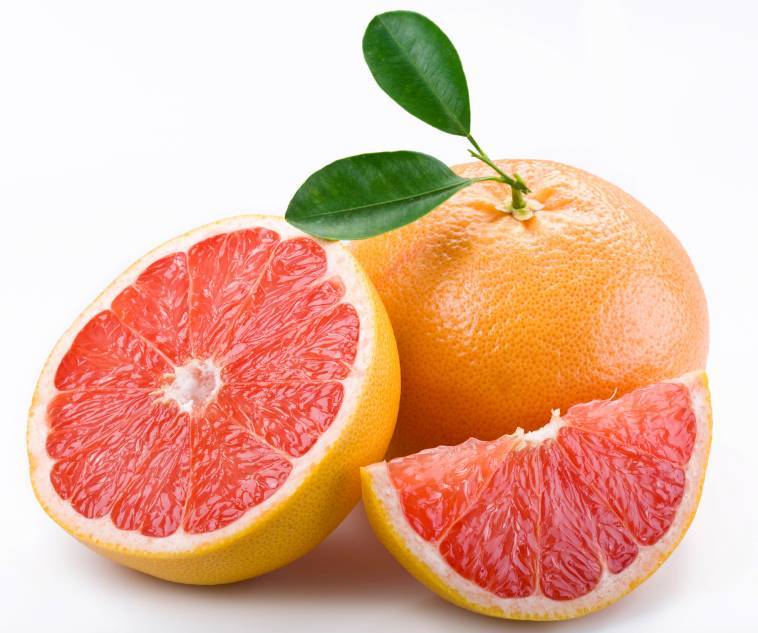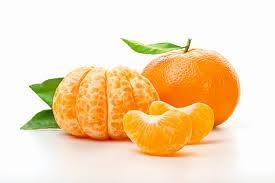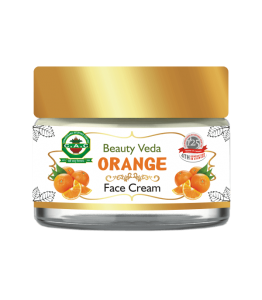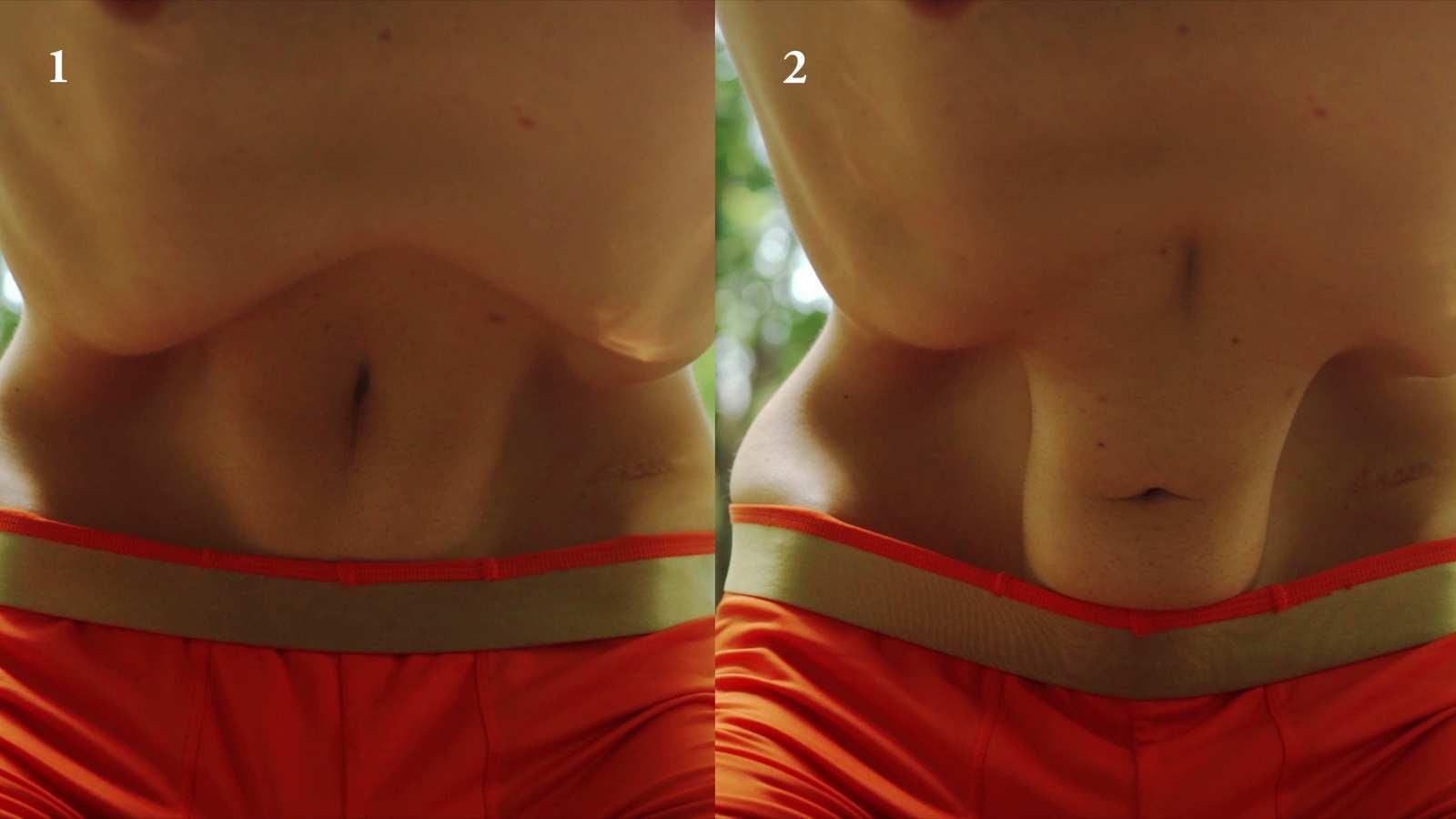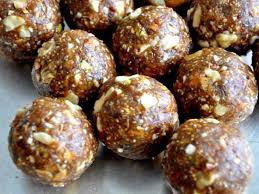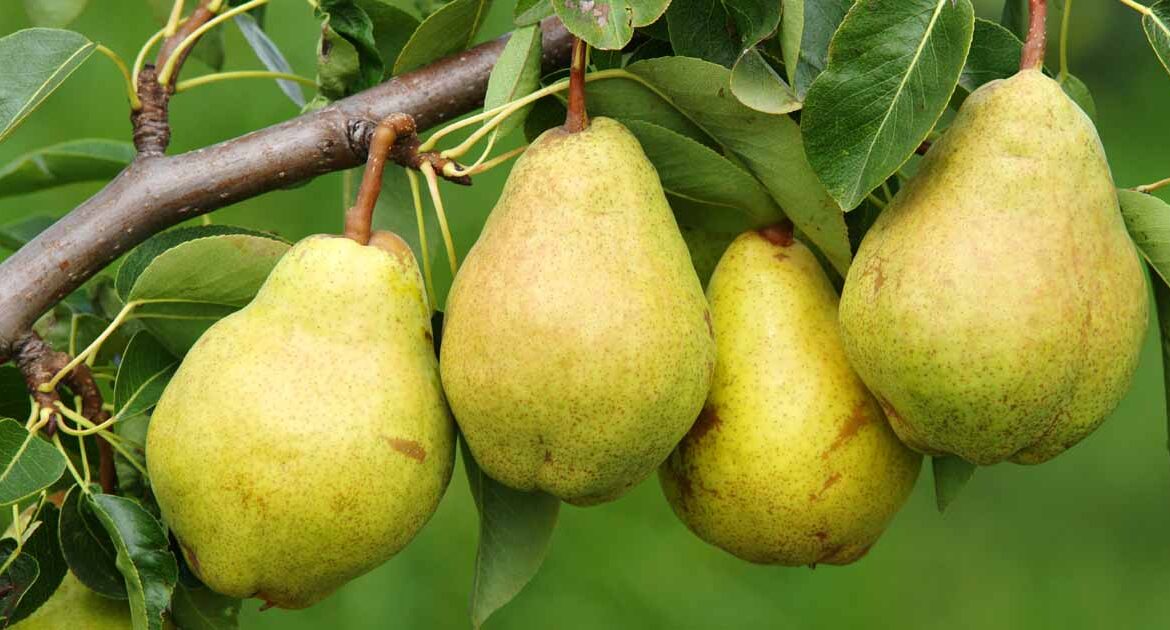Author Archives: Dr. Vaidya Karanvir Singh
ASHTONINDATIYA PURUSHA – EIGHT UNDESIRABLE PERSONS IN AYURVEDA
- March 8, 2021
- Posted by Dr. Vaidya Karanvir Singh
- 0 Comment(s)
DESCRIPTION
अथातोऽष्टौनिन्दितीयमध्यायं व्याख्यास्यामः||१||
इति ह स्माह भगवानात्रेयः||२||
Now we shall explain the chapter “Ashtauninditiya” (Eight undesirable person). Thus said Lord Atreya.
In Ayurveda, ‘Charakacharya’ has described eight ‘Nindya prakrities’ (undesirable constitution) according to the body constitution. Ayurveda is the earliest system of Medicine in the world. Ayurved is the science of life that deals with every aspect of life. Ayurveda has two main objectives i.e. protection and promotion of health and secondly cure of the diseases. To fulfill these objectives various Samhita was composed. These Samhita deal with Anatomy, Physiology, diagnosis, and the treatment of various diseases. In Charak Samhita, Acharya Charak has mentioned the symptoms of Prashasta Purusha (Ideal person). According to Acharya Charak prashasta purusha have has balanced proportion of muscles, strong sense organs, who can tolerate any type of disease or infection by his body strength, who can easily tolerate excessive hunger and thirst, sunlight, cold and various physical activities occur in the surrounding, who can easily digest any type of food and withstand signs of old age also who has proper muscles growth and who does not get prone to diseases easily is known as Prashasta purush. Charak Samhita described eight kinds of people who are undesirable nature in respect of their body.
EIGHT PHYSICAL DEFORMITIES – ASTA NINDITA PURUSHA
इह खलु शरीरमधिकृत्याष्टौ पुरुषा निन्दिता भवन्ति; तद्यथा– अतिदीर्घश्च, अतिह्रस्वश्च, अतिलोमा च, अलोमा च, अतिकृष्णश्च, अतिगौरश्च, अतिस्थूलश्च, अतिकृशश्चेति||३||
Ayurveda explained eight kind of physical deformities. It is said that people with these kind of deformities are difficult to treat and such people are prone to wide variety of disease. These eight deformities are:-
- Atidirgha – (Excessive tall person)
- Atihrasva – (Excessive short person)
- Atiloma – (Excessive body hairs)
- Aloma – (absence of body hairs)
- Atikrishna – (Excessive black colored person)
- Atigour – (Excessive white or fair colored person)
- Atisthula – (Excessive obese person)
- Atikrusha – (excessive lean person)
IMPORTANCE OF IDEAL BODY PROPROTION
सममांसप्रमाणस्तु समसंहननो नरः| दृढेन्द्रियो विकाराणां न बलेनाभिभूयते||१८||
क्षुत्पिपासातपसहः शीतव्यायामसंसहः| समपक्ता समजरः सममांसचयो मतः||१९||
A person with a balanced proportion of muscles and compactness of the body and solidity in sense organs is not overcome by the attack of disorders. Such people can able to tolerate hunger, thirst, the heat of the sun, cold and physical exercise. Their digestion, absorption of food, and muscle metabolism are in an equilibrium state.
ATIDIRGHA – (EXCESSIVE TALL PERSON)
In this type of deformity, the person is excessively tall. This is compared to the gigantism of pituitary origin. In gigantism, most features and signs are related to bones, like very large hands and feet, long and thick bones, thick toes, and fingers. Studies show that excessive tall people prone to develop cancer. It is due to more no cells in tall people, more cell division occurs that makes you more prone to develop cancer.
ATIHRASVA – (EXCESSIVE SHORT PERSON)
In this type of deformity, the person is short in height. This can be compared to dwarfism. This condition also affects bones. Involvement of Vata in both gigantism and dwarfism, since Vata operates from bones. Dwarfism is a genetic condition. If Vata affects the embryo, this can cause disproportionate growth of bones which may continue after birth. Vata can also affect growth formation after birth. Kapha is the chief dosha involved in the growth and maturation of infant into child, and child into adolescence. Kapha is active during the growth phase. When Kapha is normal they properly govern growth and development, bone, tissues, and organs are proportionally formed. When there is an imbalance between Kapha and Vata dosha, the bone may be long and short lead to gigantism and dwarfism.
ATILOMA – (EXCESSIVE BODY HAIRS)
In this type of deformity, there is excessive hair growth in body. This can be closely compared to hirsutism. It usually occurs due to the excessive production of male hormones such as androgens. It can be inherited or occur as a part of a pathological condition. It can occur both in men and women on parts of the body where hairs are normally absent or minimal such as the chin chest or face. Since it is an excess of the male hormone, it can be correlated to excessive Shukra dhatu. Shukra in the true scene is semen or sperm.
ALOMA – (ABSENCE OF BODY HAIRS)
In this type of deformity, there is the absence of body hairs. It is mainly due to the aggravation of pitta dosha.
RESON BEHIND ATISTHULA AND ATIKRUSHA PERSON DEFORMIRTIES –
तत्रातिस्थूलकृशयोर्भूय एवापरे निन्दितविशेषा भवन्ति | अतिस्थूलस्य तावदायुषो ह्रासो जवोपरोधः कृच्छ्रव्यवायता दौर्बल्यं दौर्गन्ध्यं स्वेदाबाधः क्षुदतिमात्रं पिपासातियोगश्चेति भवन्त्यष्टौ दोषाः| तदतिस्थौल्यमतिसम्पूरणाद्गुरुमधुरशीतस्निग्धोपयोगादव्यायामादव्यवायाद्दिवास्वप्नाद्धर्षनित्यत्वाद–चिन्तनाद्बीजस्वभावाच्चोपजायते| तस्य ह्यतिमात्रमेदस्विनो मेद एवोपचीयते न तथेतरे धातवः, तस्मादस्यायुषो ह्रासः; शैथिल्यात् सौकुमार्याद्गुरुत्वाच्चमेदसो जवोपरोधः, शुक्राबहुत्वान्मेदसाऽऽवृतमार्गत्वाच्च कृच्छ्रव्यवायता, दौर्बल्यमसमत्वाद्धातूनां, दौर्गन्ध्यं मेदोदोषान्मेदसः स्वभावात् स्वेदनत्वाच्च, मेदसः श्लेष्मसंसर्गाद्विष्यन्दित्वाद्बहुत्वाद्गुरुत्वाद्व्यायामासहत्वाच्च स्वेदाबाधः, तीक्ष्णाग्नित्वात् प्रभूतकोष्ठवायुत्वाच्च क्षुदतिमात्रं पिपासातियोगश्चेति ||४||
Out of eight, these too obese and too lean physical appearances are considered the most undesirable ones. The excessively obese person has eight inherent defects in them: reduced lifespan, constricted or limited movement (hampered due to loose, tender, and heavy fats), reduced sexual activities, impotence (due to a small quantity of semen produced and obstruction of the channel of semen by medas dhatu), debility (due to dhatu imbalance), emit bad smell (due to the inherent nature of fatty tissues as well as excessive sweating), profuse sweating (since medas and Kapha are vitiated), and excessive hunger and thirst (due to excessive digestive Agni and Vayu in the body). Excessive obesity is caused due to over-nourishment and excessive intake of a heavy, sweet, cold, and fatty diet, lack of physical exercise, abstinence from sexual intercourse, sleeping during the daytime, lack of mental activities, and hereditary or genetic defects. These consequences may lead to an excess of fat and consequent depletion of dhatus.
PATHOPHYSIOLOGY OF OBESE PERSON
भवन्ति चात्र– मेदसाऽऽवृतमार्गत्वाद्वायुः कोष्ठे विशेषतः| चरन् सन्धुक्षयत्यग्निमाहारं शोषयत्यपि||५||
तस्मात् स शीघ्रं जरयत्याहारं चातिकाङ्क्षति| विकारांश्चाश्नुते घोरान् कांश्चित्कालव्यतिक्रमात्||६||
एतावुपद्रवकरौ विशेषादग्निमारुतौ| एतौ हि दहतः स्थूलं वनदावो वनं यथा||७||
मेदस्यतीव संवृद्धे सहसैवानिलादयः| विकारान् दारुणान् कृत्वा नाशयन्त्याशु जीवितम्||८||
मेदोमांसातिवृद्धत्वाच्चलस्फिगुदरस्तनः| अयथोपचयोत्साहो नरोऽतिस्थूल उच्यते||९||
इति मेदस्विनो दोषा हेतवो रूपमेव च| निर्दिष्टं …|१०|
Due to the obstruction of body channels by medas dhatu, the movement of Vata is especially moved with the help of koshtha and confined to koshtha (abdominal viscera) resulting in the activation of digestive power and absorption of food quickly. Hence, the personable to digest food quickly and becomes a hunger man. A person not following the rules of taking meals at specific times during the day is afflicted by serious diseases. Agni and Vata are the two most annoying factors of obesity. These factors blight an obese person as a wildfire destroys a forest completely. As the body gains excessive fat, spoil doshas suddenly cause severe diseases resulting in rapid deterioration of life. The person is considered too obese when there is excessive fat in muscle tissue in the regions of the buttocks, abdomen, and breasts. These are the causes, signs, and symptoms of an obese person.
FEATURE OF EXCESSIVELY LEAN PERSON
… वक्ष्यते वाच्यमतिकार्श्ये त्वतः परम्||१०||
सेवा रूक्षान्नपानानां लङ्घनं प्रमिताशनम्| क्रियातियोगः शोकश्च वेगनिद्राविनिग्रहः||११||
रूक्षस्योद्वर्तनं स्नानस्याभ्यासः प्रकृतिर्जरा| विकारानुशयः क्रोधः कुर्वन्त्यतिकृशं नरम्||१२||
व्यायाममतिसौहित्यं क्षुत्पिपासामयौषधम् | कृशो न सहते तद्वदतिशीतोष्णमैथुनम्||१३||
प्लीहा कासः क्षयः श्वासो गुल्मोऽर्शांस्युदराणि च| कृशं प्रायोऽभिधावन्ति रोगाश्च ग्रहणीगताः||१४||
शुष्कस्फिगुदरग्रीवो धमनीजालसन्ततः| त्वगस्थिशेषोऽतिकृशः स्थूलपर्वा नरो मतः||१५||
Features of an excessively lean person. Intake of dry (non-unctuous) diets and drinks, fasting, intake of food in inappropriate quantity, overuse of therapeutic purificatory measures, distress, suppression of natural urges, inadequate sleep or lack of sleep, dry powder massage, infatuation in baths, heredity, old age, continued illness from long time and anger make a person too lean. The excessively lean person does not tolerate the physical exercise, intake of food in large quantities, hunger, thirst, diseases, and drugs. They cannot tolerate cold, heat, and sexual intercourse. Such a person is associated with splenic diseases, cough, wasting, dyspnea, abdominal tumor, piles, abdominal disorders, and disorders of grahanі. The excessively lean person has dried up buttocks, abdomen, and neck and prominent vascular network
LINE OF TREATEMENT FOR OBESE OR LEAN PERSON
सततं व्याधितावेतावतिस्थूलकृशौ नरौ| सततं चोपचर्यौ हि कर्शनैर्बृंहणैरपि||१६||
स्थौल्यकार्श्ये वरं कार्श्यं समोपकरणौ हि तौ| यद्युभौ व्याधिरागच्छेत् स्थूलमेवातिपीडयेत्||१७||
Both these undesirable types of people (too obese and too lean) are always suffering from some disease or the other and need to be constantly managed by bulk-reducing and bulk-promoting therapies. Both of the two, lean is less harmful than obese, and the physical and mental sufferings are more in obese person in comparison to a lean person.
गुरु चातर्पणं चेष्टं स्थूला गुरु चातर्पणं चेष्टं स्थूलानां कर्शनं प्रति| कृशानां बृंहणार्थं च लघु सन्तर्पणं च यत्||२०||
Heavy and non-nourishing (diet) therapy are prescribed for slimming in too obese person, while for promoting the bulk of the too lean person light and nourishing therapy is prescribed.
Management of obesity
वातघ्नान्यन्नपानानि श्लेष्ममेदोहराणि च| रूक्षोष्णा बस्तयस्तीक्ष्णा रूक्षाण्युद्वर्तनानि च||२१||
गुडूचीभद्रमुस्तानां प्रयोगस्त्रैफलस्तथा| तक्रारिष्टप्रयोगश्च प्रयोगो माक्षिकस्य च||२२||
विडङ्गं नागरं क्षारः काललोहरजो मधु| यवामलकचूर्णं च प्रयोगः श्रेष्ठ उच्यते||२३||
बिल्वादिपञ्चमूलस्य प्रयोगः क्षौद्रसंयुतः| शिलाजतुप्रयोगश्च साग्निमन्थरसः परः||२४||
प्रशातिका प्रियङ्गुश्च श्यामाका यवका यवाः| जूर्णाह्वाः कोद्रवा मुद्गाः कुलत्थाश्चक्रमुद्गकाः ||२५||
आढकीनां च बीजानि पटोलामलकैः सह| भोजनार्थं प्रयोज्यानि पानं चानु मधूदकम्||२६||
अरिष्टांश्चानुपानार्थे मेदोमांसकफापहान्| अतिस्थौल्यविनाशाय संविभज्य प्रयोजयेत्||२७||
प्रजागरं व्यवायं च व्यायामं चिन्तनानि च| स्थौल्यमिच्छन् परित्यक्तुं क्रमेणाभिप्रवर्धयेत्||२८||
Food and drinks that alleviate vata and reduce kapha or meda dhatu , enema with sharp and hot drugs, therapeutic powder massage, use of guduchi, musta, triphala, bibhitaka and amalaka, takrarishta and honey are prescribed for the management of obesity. A formulation prepared from vidanga, nagara, yavakshara, ash powder of black iron along with honey, powder of yava and amalaka is also an excellent weight-loss drug. A diet consisting of prashatika, priyangu, shyamaka, yavaka, yava, jurnahvam, kodrava, mudga, kulattha, chakramudgaka, adhaki along with patola and amalaka is very effective in obesity and maintaining good health. Honey water and alcoholic preparations may be taken as postprandial drinks that help in reducing excessive fat and muscle tissues and also alleviating kapha dosha.
Management of leanness
स्वप्नो हर्षः सुखा शय्या मनसो निर्वृतिः शमः| चिन्ताव्यवायव्यायामविरामः प्रियदर्शनम्||२९||
नवान्नानि नवं मद्यं ग्राम्यानूपौदका रसाः| संस्कृतानि च मांसानि दधि सर्पिः पयांसि च||३०||
इक्षवः शालयो माषा गोधूमा गुडवैकृतम्| बस्तयः स्निग्धमधुरास्तैलाभ्यङ्गश्च सर्वदा||३१||
स्निग्धमुद्वर्तनं स्नानं गन्धमाल्यनिषेवणम्| शुक्लं वासो यथाकालं दोषाणामवसेचनम्||३२||
रसायनानां वृष्याणां योगानामुपसेवनम्| हत्वाऽतिकार्श्यमाधत्ते नृणामुपचयं परम्||३३||
अचिन्तनाच्च कार्याणां ध्रुवं सन्तर्पणेन च| स्वप्नप्रसङ्गाच्च नरो वराह इव पुष्यति||३४||
Sleep, happiness, comfortable bed, satisfaction , relaxed mind, sobriety from anxiety, sexual act and physical exercise, cheerfulness, newly harvested cereals, fresh wine, meat soup of animals residing in domestic, marshy and aquatic areas, well-cooked and prepared meat, curd, ghee, milk, sugarcane, shali rice, masha, wheat and its products, jaggery and its products, enema and sweet drugs, regular oil massage, unctuous bath, wear white dress, elimination doshas from body in due time and regular use of rejuvenating and aphrodisiac drug reduce excessive leanness and nourish the body completely. Besides, free from anxiety, intake of nourishing and healthy diet and adequate sleep makes the man healthy and obese like a pig.
SWAPNA (DREAMS)
- March 8, 2021
- Posted by Dr. Vaidya Karanvir Singh
- 0 Comment(s)
Concept of SWAPNA in Ayurveda-
What is a DREAM??
Swapna or dreams are just succession of images, ideas, emotions and sensations that occurs involuntarily in the mind during certain stages of sleep i.e. when Indriyarth Sannikarsha is absent or there is loss of touch or ignorance to other senses.
Your mind is responsible for creating the images in the dream although It is the main initiator is the Atma or soul.
In dream our subconscious mind gets activated and works on the facts which the conscious mind failed to resolve.
Dream is present two forms i.e. physiological and pathological condition of body.
Physiological condition- Dream signifies physical costitutution (Doshaja Prakriti status.
Pathological condition- Diseases and Arista. This concept needs some exploration. It is not used for clinical practice to determine health.
In Classics there are many entities like Tridosha, Triguna, Panchmahabhuta, Lok Purusha Saamya etc.
Similarly there is Trayoupstambha or 3 pillars of body – Swapna, Aahar and Brahmcharya.
IS THERE ANY STUDY OF DREAMS??
The Answer is “YES”. The scientific study of dreams is called Oneirology.
What are the causes of dreams??
Dreams mainly occur in the rapid- eye movement stage (REM) of the Dream— when brain activity exceeds and resembles that of being awake.
REM sleep is revealed by continuous movements of the eyes while sleeping. At that time the dreams may take place during other stages of sleep.
Is there any effect of Swapna??
Based on the Effects of Swapna it can be classified into 2 types:
- Not effecting on a person’s health or life
- Effecting the person’s health or life.
In ancient text- Harita Samhita there are some points that are mentioned regarding dreams they are-
- Dream by a person in the first part of night- the result comes about in 1 year.
- Dreams during the 2nd part of night/ during daytime/ rainy season- the effect occurs in 6 months.
- Dream effect if seen in third part of night seen in 3 months.
- The Dream effect which is seen in the 4th part of night or in early morning- Having result in 10 days.
Viphala Swapna (or Ineffective dreams)-
Dreams that have no effect or you should dismiss or deemed ineffective include:
- Dreams of usual to the one’s constitution
- Not able to remember or easy to Forgot or forgotten quickly after the next dream.
- Seen when you are worried
- Experienced during the diwaswapna or day sleep
What are the Types of swapna-
The Acharya Charaka described 7 fold classification of the Swapna.
Ayurveda described dreams on the basis of causes these are as follows-
- Drista Sruta – It Based on the waking experience.
- Shruta- It is due to somatic impulses
- Anubhuta- These are due to some heart touching incidence that is happened in life.
- Prarthita- It is believed to be caused by influence of the supernatural
- Kalpita-Due to Imagination
- Bhabik- These type of dreams are based on emotional Incident happened in waking life.
- Doshaja- these are due to Influence of Tri-Doshas.
KNOW YOUR PRAKRITI BY DREAMS-
According to different Acharya’s there is difference in dream of different Prakriti –
VATA PRAKRITI-
- Flies or rises high in the sky
- Climbing on mountain or tree
- Riding on animals like Camel, Elephant etc.
- Dried and crooked trees and river.
PITTA PRAKRITI-
- Sees Gold in dream
- Trees Palash and karnika trees.
- Sun, Bright flames or light
- Fire, falling meteors, Lightning
- Red colored Sky
KAPHA PRAKRITI-
- Sees Lotus
- Birds like Hansa and Chavarka
- Sees Ponds
- Clouds in dream
Ayurvedic Concept of Garbha linga Dharana (Determination of Male child or Female Child by Dreams)
Ayurveda is the science of life there is very interesting description in dreams for all Curious Mothers.
Dreams depicting Male Child-
Takes food and drink as that of a male
Does activities as that of a male
Flowers- Padma(Lotus), Utpala (Blue Lotus), Kumuda
Fruits denoting the male gender- Amrataka (Wild Mangoes)
Dreams depicting Female Child-
Takes food and drink as that of a female
Does activities as that of a female
Flowers- Which denotes female gender- Taruni-rose, Japa-shoe flower
Fruits – Which female gender – Kadali-bananas
Other Padartha or objects which denote the female gender
Nidra(Sleep)
In Ayurveda, sleep is one of the important pillars (upastambha traya) which sustain life.
Nidra is also important as Ahara (food). Again it comes under unsurpassable urge (Adharniya Vega). If the Vega is suppressed then it can causes headache, body pain and heaviness of eyes.
REQUIREMENT OF SLEEP IN
SATVIK PERSON (Satva guna Dominant) – 4 to 6hrs of Sleep
RAJSIK PERSON (Rajo Guna dominant) – 8 hours of sleep
TAMSIK PERSON (Tamo guna dominant) – 10 to 12hrs of sleep
ARE YOU A SUFFERER OF INSOMNIA??
Don’t Ignore Insomnia as it will lead to further destruction of your body and will give rise to various Physiological and Psychological disorders.
Have a good and stress free sleep.
CAC MEDICINES AND COUNSELLING WILL HELP YOU TO GET RELIEF FROM STRESS AND HAVE A GOOD SLEEP AND REJUVINATE YOUR BRAIN
CAC Stress Care Tablet
It constitutes of natural herbs- Sarpgandha, Brahmi, Tagar, jatamansi.
It helps you to get relieve from stress conditions.
Helps to calm down the nervous system and further it helps to increase the mental and physical performance.
Dosage: Take 1 tab two times daily or as directed by the physician.
CAC Brain Relaxant Churna
This contains 100% natural herbal extracts of Atmagupta (Mucuna pruriens).
It normalizes the nerve cell functions and supports the brain function.
It is very effective in Alzheimer disease and it helps to maintain the overall performance of the nervous system.
Dosage: Take 1 teaspoonful twice daily or as directed by the physician
GRAPEFRUIT
- March 8, 2021
- Posted by Dr. Vaidya Karanvir Singh
- 0 Comment(s)
DESCRIPTION
Grapefruit, scientific name Citrus × paradise and family Rutaceae and it is citrus tree fruit also called pomelo this fruit is spherical shape, slightly flattened, with a pale yellow, reddish smooth or rough skin. The flesh is yellow except in the reddish varieties, Its English name, Grapefruit, makes reference to the fact that the fruits grow in clusters. It has a bitter flavor. It is consumed as fresh fruit juice at an industrial level. Grapefruit also used in the kitchen for garnish of meat such as duck, chicken, pork. All other citrus fruit is very rich in vitamin C. It has many healing properties, such as the prevention of certain types of cancer, and digestion problems, stomach problems, and have antiseptic, tonic, and diuretic qualities.
OTHERS NAMES
- Hindi – chakotara
- English – pomelo
- Punjabi – cakotara
- Marathi – draksaphala
- kannada – draksihannu
- telugu – draksapandu
NUTRITIONAL VALUE
The United States Department of Agriculture offers the following nutritional information for a one-cup grapefruit juice contain:-
- Calories: 74
- Total fat: 0.23 grams (g)
- Carbohydrates: 18.58 g
- Dietary fiber: 2.5 g
- Protein: 1.45 g
- Sugars: 16.05 g
- Calcium: 28 milligrams (mg)
- Iron: 0.21 mg
- Magnesium: 18 mg
- Phosphorus: 18 mg
- Potassium: 320 mg
- Zinc: 0.16 mg
- Vitamin C: 79.1 mg
HEALTH BENEFITS
- Boost immune system – Grapefruit is loaded with vitamin C, It helps to boost the body’s immune system. Grapefruit is also loaded with Vitamin A, another vitamin that has been proven to help immune function. This powerful combination helps you to protect from disease and infection and minimize the sickness period.
- Weight management – Obesity is a common problem that can lead to more issues, including heart disease and type 2 diabetes. Overeating and heavy eating is one contributing factor to obesity. Grapefruit is a fiber packet that can help with weight management by slowing the rate at which your body digests food and making you feel fuller and reducing the desire to overeat.
- Kidney stone – Kidney stones can be extremely painful to pass out. There are many causes of kidney stones that occur in the body including weight, diet, and certain medications. Add grapefruit to your diet may help prevent kidney stones formed by calcium buildup. The citric acid in the grapefruit can combine with excess calcium to help flush it from your body system.
- Lower stroke rate – citric acid and flavonoids present in grapefruit may lower the risk of ischemic (blood clot-related) stroke and intracerebral stroke. The combination of fiber, potassium, lycopene, vitamin C, and choline in grapefruit could all contribute to heart health. People to increase their dietary intake of potassium and reduce the amount of salt in their foods. This can help prevent high blood pressure and a range of complications that can occur from it.
- Protect eye health – Grapefruit has anti-inflammatory properties, helps to improve and prevent age-related macular degeneration (AMD). This eye disease leading to cause of permanent vision loss in people over the age of 60. Lutein and zeaxanthin are found in the macular of the eye part of the retina responsible for fine vision, Carotenoids present in grapefruit help to protect the macular by filtering out harmful blue light and also provide antioxidant protection.
- Promote appetite control – Grapefruit is an excellent appetite suppressant as compared to other fruit. It is said that the smell of the grapefruit reduces the feeling of hunger, that’s the reason why people often include grapefruit in their diet to lose weight. The high fiber content present in grapefruit slows the rate of stomach empties and increasing digestion time. This promotes your stomach fuller for longer.
- Reduce fever – Grapefruit pulp or juice is thought to help patients recover faster from the fever and reduce the burning sensation that occurs when the body reaches a high temperature. It also boosts your immune system against colds and other common illnesses that occur in the body.
- Eliminate constipation – Freshly squeezed grapefruit juice drinks in the morning are a great remedy for reducing constipation. The juice stimulates the colon and other parts of the body relating to the digestive system. The stimulating effect of fiber on the secretion and stimulation of gastric juices ease the constriction of the digestive tract and induce a bowel movement.
- Reduce fatigue – Grapefruits are beneficial to reduce fatigue, they can help you to eliminate your body tiredness that can be caused by routine work. Drinking grapefruit juice can be refreshing and quickly boost energy levels.
TANGERINE (Kinnow)
- March 8, 2021
- Posted by Dr. Vaidya Karanvir Singh
- 0 Comment(s)
What’s the Difference between Orange and Kinu?
Tangerine are often pronounced as Kinoo or Kinu. This fruit is a high yield mandarin & is a hybrid of 2 citrus cultivators ‘King’ and ‘Willow Leaf’.
It’s juicier than oranges and is majorly grown in Punjab, Himachal Pradesh, Jammu & Kashmir, Rajasthan and even Haryana.
You can think of a Tangerine as the foreign cousin of desi orange, as they are having a lot of difference biologically.
| ORANGE | KINNOW |
| Hybrid – Citrus reticulate and citrus maxima | Hybrid – Citrus deliciosa and citrus nobilis |
| Colour– Varies from saffron to light orange colour | Colour- It is generally dark in colour |
| Skin- Very light and thin skin that you can easily peel and are thus easily susceptible to sunburn. | Skin- It has a thicker skin that’s tight as well and less prone to sunburn. |
| COST- Orange is costlier than the kinnow. | COST- They are cheaper as compared to oranges and they have a high yield. Seeds- kinnow have more seeds |
| TASTE- Oranges are known to be sweet in taste | Taste- Juicier than orange and has more Swetish-sour taste |
BOTANICAL DESCRIPTION of Tangerine or Kinnow-
BOTANICAL NAME- Citrus reticulata
COMMON NAME- Kinnow, Kinu
The name of the fruit was first used for the fruits coming from Tangier, Morocco, described as a mandarin variety. Some differs in disease resistance.
Shape– They are smaller and less rounded than common oranges.
Taste- Sweeter, Less sour and stronger, than that of an orange.
A ripe tangerine– It is firm to slightly soft and having pebbly-skinned with no deep grooves, as well as orange in color.
Skin or Peel- It is thin, white mesocarp is little bitter.
Peak season of tangerine– Autumn to spring.
Method of eating- They can be peeled and eaten by hand.
Fresh fruit – It is also used in salads, desserts and main dishes. The peel is used fresh or dried as a spice or zest for baking and drinks. Fresh tangerine juice and frozen juice concentrate is more commonly available in the United States.
Nutrients Value and Constituents-
A Medium size Kinnow contains approx 85% water
13% and almost negligible amounts of fat and protein
Micronutrients– It is rich in Vitamin C content and all other nutrients in low amounts.
Outer Skin/Peel of Tangerine- It constitutes of fat, protein, ash, magnesium, carotenoids, dietary fiber and polyphenols.
Juice concentrate- beta-cryptoxanthin xanthophyll esters (zeaxanthin and lutein)
It also contains carotenoids, such as beta-cryptoxanthin.
Mandarin (Citrus reticulata Blanco) contains limonoids, including obacunone 17 beta-D-glucopyranoside, nomilinic acid 17 beta-D-glucopyranoside, limonin, nomilin, and a limonoid glucoside mixture.
MEDICINAL BENEFITS OF KINNOW-
- Anti-Poisonous- It is an effective anti-poison medicine.
Fresh juice of kinnow- consumed on an empty stomach enhances appetite and also stimulates the pancreas functions.
- It is Rich in mineral salts, daily consumption of kinnow fruit helps in alleviating acidity.
- According to nutritionists, this fruit is very effective for those who live a sedentary lifestyle.
- Anti-cancerous and Antioxidant properties- The anti-oxidant properties of kinnow not only reduce chances of cancer but also help in lowering the risk of HIV i.e having Anti-HIV Properties.
- Good For Intestines- Consuming too much of junk and foods which are loaded with harmful chemicals due to which the outer layering of intestine becomes thick with a layering of those harmful chemicals and in that situation fruits like kinnow helps in reducing sluggishness of intestines.
- Vibadhata or Constipation- This fruit is also helpful in chronic constipation because of presence of high roughage content. It is suggested to consume the fresh fruit at least twice a day for effective results.
- Metabolism– The mineral and vitamins present in this fruit enhances your overall metabolism
Skin Problems- Orange and kinnow both helps you attain a flawless and glowing skin. The skin of fruit can be used for body scrubbing.
CAC ORANGE CREAM- It is clinically tested and also available at Amazon. You can try it if you want Magical Effects to your Skin.
CAC ORANGE CREAM
- Cholesterol- This fruit is helpful in lowering the levels of cholesterol. According to the experts, it improves the level of good cholesterol and it reduces the bad cholesterol level in the body.
NAULI
- March 8, 2021
- Posted by Dr. Vaidya Karanvir Singh
- 0 Comment(s)
(Abdominal massaging)
Nauli is one the shatakarma practice of contracting and isolating the rectus abdomini muscles. According to Gherand Samhita it is known as lauliki.The root word ‘nala’ means the navel string i.e. rectus abdomini muscles and it also means a tubular vessel.Lauliki word comes from word ‘lola’ which means ‘to roll’ or ‘agitate’.
When the rectus abdomini muscles are rotated from right to left (clockwise), that is called vama nauli.When they are rotated from left to right (anticlockwise), it is called dakshina nauli.When the muscles are pulled together and the middle group of muscles protrude, it is called madhyama nauli.Before attempting nauli you must be able to perform uddiyna bandha correctly.
The rectus abdomini muscles are the two elongated vertical muscles situated in the anterior aspect of the abdomen, which run from under the mid of the rib cage near the diaphragm to the pubic bone. The muscles you are manipulating in nauli kriya are the external oblique and the transverse abdomini muscles as well.
At first nauli is practiced with the hands just above the knees, and the body bent forward. Once this is perfected you can practice in a more upright position and hands placed on the upper thighs.
Stage 1. Vama and Dakshina Nauli (left and right isolation)
Stand with the feet 45 to 60 centimeters apart.
Bend the knees and rest the palms just above the knees, thumbs on the medial aspect of the thighs, fingers touching the outsides, or as shown in picture.
Keep the head up and the eyes open.
Breathe in deeply and intensely through the nose and exhale quickly through the mouth, slightly pursuing the lips.
Perform Jalandhar bandha while maintaining bahiranga (external) kumbhaka.
Suck the abdomen and stomach in by performing uddiyana bandha.
Lift the right hand slightly off the knee, keeping all the pressure on the left hand and knee ,but do not lean to the left side .This will automatically isolate the rectus abdomini muscles on the left. Then release uddiyana bandha, elevate the head slowly, stand up and inhale gently .This is vama nauli. Practice in the same way on the right side as well.
Keep the right hand resting above the knee and slightly lift the left hand to segregate the rectus abdomini muscles on the right .This is dakshina nauli.
In between each round of nauli, release uddiyan first, then Jalandhar, elevate the head, stand upright and then breathe in very slowly through the nose. Take a few normal breaths before performing the next round.
Stage2. Madhyama nauli (central abdominal contraction)
Start to rotate the muscles to the other side, but before they reach the opposite side hold them in the middle of the abdomen. In order to rotate the muscles, slowly bring the weight back on to the hands which was lifted from the knee. While holding the muscles in the middle, both hands should rest above the knees.
This is madhyama nauli.
Stage3.
Practice in the same way as stages 1 and 2 but learn to control the contraction of the muscles and to segregate the muscle groups without lifting the hands from the legs. First try by just releasing the pressure off the hand without shifting it from the leg.
Gradually begin to control the practice so that the hands remain fixed on the legs .Then practice with the hands on the upper thighs.
Stage 4. Abdominal rotation or churning
Stand in the same position as in stage 1, keeping the hands on the legs above the knees throughout the entire practice.
Practice vama nauli and then rotate the muscles to the right and back to the left. Continue rolling the muscles in a clockwise direction. This is known as ‘churning’. Start by practicing it three times in sequence, then release. Practice dakshin and vama nauli in the same way. When this is perfected you can escalate up to 10 rotations, then 20 rotations.
Stage5.
Practice stages 1 and 2 sitting in siddhasana/siddha yoniasana with the buttocks uplifted slightly by a cushion.Initially it may be tough to control the muscles in the sitting position, so it is better to first perfect the practice of nauli in the standing or upright position.
Benefits:
Nauli is foremost of the hatha yoga practices. It kindles the digestive fire, removing indigestion, sluggish, digestion, and all the disorders of the doshas, and brings about happiness.
Nauli is especially useful for alleviating indigestion, constipation, acidity, flatulence, diarrhea, depression, hormonal imbalances, sexual and urinary disorder, and lack of energy, dullness, laziness and emotional disturbances. Through this practice one can control appetite and strengthen one’s willpower. This practice also helps in controlling sexual desires. If this can be attained, the practitioner will definitely find deeper satisfaction within.
Contra-indication:
Nauli cannot be practiced by everyone .Those people who are suffering from heart disease, hypertension , duodenal ulcer, gastric ulcer, hernia, post-operative cases of abdominal surgery; or who are recovering from internal injuries ,cannot practice it.
DRY FRUITS LADDU
- March 4, 2021
- Posted by Dr. Vaidya Karanvir Singh
- 0 Comment(s)
Dry fruit laddus are usually prepared during festive seasons such as Diwali, Navratri and Krishna Janmashtami.
Dry fruits laddu is a simple and nutritious ladoo prepared with only dry fruits without sugar or jaggery. You do not even need edible gum to make this laddu. To make this, seedless dates are thickly crushed so that they act like edible gum and also add sweetness to the laddus.
9 ingredients
I have always loved dry fruits and Indian sweets made from them, especially cashew barfi or dry fruit barfi. I used to eagerly wait for Krishna Janmashtami in my childhood and made 3-4 ladoos of Chakkuli and Kadubu that day. These laddus were offered to Krishna Lord at the time of worship as Naivedyam. They were served to us after the puja and I was eagerly waiting for this moment.
Dry fruit ladoo is the most nutritious recipe in Indian Deserts, which also has low calories. Sugar or jaggery syrup is not used in it. The water in it is available from dry fruits and the amount of vitamin E, iron, magnesium and beta carotene in dry fruits is high.
Dry Fruits Laddu Recipe:
- Preparation Time: 15 MINUTES
- Cooking Time: 10 MINUTES
- Total Time: 25 MINUTES
for how many people: 20
- Course: Sweets
- Cooking: Indian
- Keyword: dry fruits laddu recipe
Content
- 3 tablespoon raisins
- 1 tbsp ghee
- 1 cup dateless seeds
- ¼ cup pistachios
- ¼ cup cashew nuts
- ½ tsp cardamom powder
- ¼ cup almonds
Instruction
- First of all, take 1 cup of seedless dates in a blender and dry it only 4-5 times.
- Coarsely grind the dates. Then keep aside.
- Also, finely chop cashews, pistachios and almonds. Do not make them powder because then you will not get crispness.
- Take a pan and add a teaspoon of ghee to it.
- Also, add all dry fruits such as raisins, cashews, pistachios and almonds.
- Fry them for 3-4 minutes on medium heat until they change color lightly.
- Now add blended dates to it.
- Keep on medium flame and keep the dates aside from the ladle. This allows the dates to mix well with the rest of the dry fruits.
- Now add cardamom powder and fry.
- Fry them till the dates start leaving the oil.
- Now turn off the heat and let it cool for a minute or two.
- Then immediately start making laddus. If you let it cool completely, you will not be able to make laddus.
- Serve immediately or store laddus in airtight containers.
You cannot feed dry fruits directly to the baby because they cannot chew them and there is a fear of getting stuck in their throat after eating whole. Therefore, the best way to feed dry fruits to your baby is to make powder and feed them.
Recipe of dry fruit powder for babies
Dry fruits are eaten immediately for energy and strength. Even children are advised to feed dry fruits daily, but dry fruits cannot be fed to the infant until the teeth come.
In such a situation, powder is an easy way to give your baby the nutritive elements from the dry fruits. Yes, you can make your baby healthy by feeding him a powder made of dry fruits. Here we are telling you about the benefits of dry fruit powder for your baby and how to make it.
Benefits of dry fruits for children
- Dry fruits contain rich amounts of fiber and antioxidants along with healthy fats. Dietary fats are important for the development of your baby. If you start feeding dry fruits to children at an early age, then it reduces the risk of allergies in them.
How to make dry fruit powder
- 100 grams almonds, 100 cashew nuts, 100 grams pistachios, one nutmeg, 100 grams gram gram roasted, 1 teaspoon dry ginger powder, five cardamom pieces, half a teaspoon turmeric powder.
- You will need all these things to make dry fruit powder for your baby.
Dry fruit powder recipe
- The method of preparing powder from dry fruits is as follows:
- Take a pan and fry everything mentioned above. After this keep them to cool down.
- Now pour all the dry fruits into the blender and grind them coarsely.
- You should not blend them too much because nuts leave oil.
- Now take this powder out of the blender and put it in an air tight container and keep it in the fridge.
- You can use it for a month.
Benefits of cashew nut
- It contains phosphorus which helps in the development of bones and teeth. It helps in transporting oxygen from the lungs to other organs. Cashew contains a high amount of zinc which enhances immunity
Pistachio
- Pistachios contain potassium. Dietary fibers present in it protect the baby from constipation. Vitamin B3 and B6 are involved in nervous system function and nerve impulse transmission. Both these nutrients are found in abundance in pistachios.
Benefits of eating almonds
- Almond is a low glycemic food which further reduces the risk of diabetes in children. Vitamin E is also high in these. Fat and saturated fat are also very high in almonds. It does not allow the level of bad cholesterol to increase. You cannot feed dry fruits directly because babies cannot chew them and fear of getting stuck in their throat when eating whole. Therefore, the best way to feed dry fruits to your baby is to make powder and feed them.
- Dry fruits are eaten immediately for energy and strength. Even children are advised to feed dry fruits daily, but dry fruits cannot be fed to the infant until the teeth come.
- In such a situation, powder is an easy way to give your baby the nutritive elements from the dry fruits. Yes, you can make your baby healthy by feeding him a powder made of dry fruits.
Benefits of dry fruits for children
- Dry fruits contain rich amounts of fiber and antioxidants along with healthy fats. Dietary fats are important for the development of your baby. If you start feeding dry fruits to children at an early age, then it reduces the risk of allergies in them.
KAPALBHATI
- March 4, 2021
- Posted by Dr. Vaidya Karanvir Singh
- 0 Comment(s)
The last of the six shatkarma is kapalbhati. Word `kapal` means cranium or forehead and `bhati` is light or splendor, but it also means perception or knowledge. It is a technique which invigorates the entire brain and awakens the dormant centers which are responsible for subtle perception .It is called frontal brain cleansing technique. It is similar practice to bhastrika pranayama except that exhalation is emphasized and inhalation is the result of forcing the air out. In normal breathing inhalation is active and exhalation is passive .This practice reverses that process.
Three types of kapalbhati:
- Vatkrama
- Vyutkrama
- Sheetkrama
Vatkrama:
Sit in a comfortable meditative posture, preferably siddhasana and prepare yourself as for meditation .Close the eyes and relax, keeping the spine erect. Place the hands in either jnana mudra or chin mudra .Practice kaya sthairyam, i.e. Steadiness of the body. Inhale deeply and perform fifty fast respirations through both nostrils placing more emphasis on exhalation .Inhalation should be short .After the last exhalation, inhale deeply through the nose and exhale quickly through the mouth, slightly pursuing the lips .With kumbhaka, perform jalandhar bandha, moola bandh and uddiyan bandha in this order .Maintain kumbhaka and the bandhas for as long as possible and count the duration.
Before inhaling, release moola bandha, uddiyana bandha and Jalandhar bandha in this order .When the head is raised, inhale slowly through the nose .Practice three rounds of fifty breaths. When this is perfected, you can increase it to five rounds. You can increase the practice by ten breaths each week, so that after five weeks you are practicing one hundred breaths per round.
Vyutkrama:
(Sinus cleansing)
The second practice of kapalbhati, vyutkrama, is very similar to jala neti and is sometimes given as part of neti .Vyutkrama means ‘expelling system’ .For this practice you need a bowl of warm saline water rather than a neti lota. Lean forward and scoop the water up in the palm of the hand and sniff the water in through the nostrils .Let the water flow down into the mouth and then spit the water out from the mouth. Practice in this way several times. It is important to relax while sucking the water in .There should be absolutely no fear. If there is pain in the nose during the practice it usually means that the water contains either too little or too much salt.
Sheetkrama:
The third practice, sheetkrama is the reverse of vyutkrama .Sheet means cool or passive. In this practice you take a mouthful of warm, salty water and instead of swallowing it, you push it up through the nose and let it flow out.
Remember to remain relaxed the whole time .Vyutkrama and sheetkrama should both be done standing rather than squatting .After wards make sure all the water is removed from the nose in the same way prescribed for jala neti, or practice vat karma kapalbhati.
Time of practice:
The best time to perform kapalbhati is early in the morning .However, Vyutkrama and sheetkrama kapalbhati may be performed at any time of the day except after meals.
Duration:
Vyutkrama and sheetkrama kapalbhati should take only a few minutes each and may be performed as a daily routine.
Contraindications:
Those people who experience frequent nasal bleeding should not perform these practices.
Benefits:
Gherand Samhita says that not only do these practices rid the sinuses of old mucus, but they make one attractive and prevent the ageing process from occurring. If the body is clogged with old mucus, bile and wind, the energy gained through pranayama practice will be utilized for rectifying your disorders. In fact if you have any mucus blockages it may create such an acute problem that you cannot practice pranayama. First you have to rid yourself of excess mucus and bile and eliminate the toxins from your system. Proper assimilation and excretion have to be established. Pranyama is more effective in a healthy body.
Vyutkrama and sheetkrama kapalbhati remove mucus from the sinuses and help to relax the facial muscles and nerves .They rejuvenate tired cells and nerves ,keeping the face young ,shining and wrinkle free .Vatkrama kapalbhati helps in the sinus ,hair loss ,and asthma .This practice can surely help in resolving all breath related problems .It is the slow and soothing process which involves deep breaths ,which help the asthmatic problem and help you gain control over it . This exercise makes the blood flow in the skull area .It relaxes your body by releasing stress and anxiety from your mind, which leads a very strong immune system. Kapalbhati also supports weight loss .Ayurvedic doctors often prescribe kapalbhati as a choice for those people who are having excess fat around their waist .It is because being overweight is considered as a symptom of increased cough and kapalbhati balances the levels of kapha in the body. It strongly stimulates the abdominal organs, in such a way that it improve digestion as the muscles of digestive tract become stronger and responsive and it also increases the blood flow to the region.
PEAR
- March 4, 2021
- Posted by Dr. Vaidya Karanvir Singh
- 0 Comment(s)
DESCRIPTION
Pear scientific name Pyrus and family Rosacea. The pear is an ancient fruit eaten since pre-historic times. Older varieties of pear had a hardened flesh that required few hours of cooking to soften. Pear is a typical fruit of temperate climates, with the delicate pleasant taste it has a wide acceptance throughout the world. The pear is mainly consumed in pies, cakes, accompanying strong cheese or Carpaccio, risotto, jams, and ice creams and it is a great fruit to be consumed in diets because of its low caloric value. Pear has high nutritional value with reasonable amounts of vitamins A, B1, B2, B3, and C and minerals like sodium, potassium, phosphorus, calcium, magnesium, and iron. Pear has a lot of fibers, giving excellent results in constipation and intestine inflammation. Pears also cure anomalies such as cystitis and kidney stones.
Other names of pear
- anjou
- seckel
- Forelle
- Bosc
- Comice
- Bartlett
- Max Red
- Royal Riviera
- Bartlett Pear
NUTRITIONAL VALUE OF PEAR
Pears contain essential nutrients and minerals that are required for our body. A 100gm of pear contains.
- Calories – 57
- Carbohydrates – 15 grams
- Total Fat – 0.1 gram
- Protein – 0.4 gram
- Dietary Fiber – 3.1 gram
HEALTH BENEFITS OF PEAR
- Skin and Hairs – Vitamin A is the most versatile nutrient. It is beneficial for keeping the skin, hair, and nails healthy and beautiful. Pears contain good amounts of vitamin A that help in keeping your skin and hair healthy. It is also enriched with nutrients like zeaxanthin and lutein that help in organ functions and enzymatic reactions also helps in keeping the skin youthful and reduces dark spots and wrinkles. Healthy skin and hair should be maintained by increasing intake of vitamin A.
- Bone health – Pear contains copper, calcium, phosphorus, manganese, and magnesium all these play a crucial role in bone health. These minerals might be required in very little amounts but plays an important role in keeping the bones strong. People with osteoporosis are advised to include pears in their diet it helps to prevent and treat debilitating conditions and bone mineral loss. Pear ensures that your bones are getting enough minerals to grow and protect against inflammation and other conditions.
- Reduce inflammation – Pears are rich in flavonoids and antioxidant components. The anti-inflammatory properties of pear help in reducing swelling and pain associated with inflammation. People suffering from symptoms like gout, arthritis should eat pears to ease the symptoms and prevent them from worsening, also improving the quality of life.
- Improving blood circulation – Pears beneficial for patients suffering from mineral deficiencies like anemia. Pears are high in iron and copper content. It helps to increase the levels of iron in the body and boost the synthesis of red blood cells. On the other hand, the increased levels of copper in the body facilitate the synthesis of essential minerals and the absorption of iron into the system. If your body has sufficient minerals to support the organs, one can prevent muscle weakness, cognitive malfunction, fatigue, and organ system malfunction.
- Help in healing – Pears are a good source of vitamin C and thus helping in wound healing. Ascorbic acid helps in synthesizing the cellular structures of the body and new tissues in the various organs of the body. So, whenever there is any burn or cut it makes sure that the damaged area is healed quickly. If you are injured, you can include pears in your diet that help in fast healing.
- Heart health – Pears are one of the fruits that have an inverse relationship with stroke risk. Since pear fruit high in potassium it means it has a significant impact on the health of the heart. Potassium acts as a vasodilator that helps in lowering blood pressure. This results in increased blood flow in all parts of the body and providing oxygen to organs. This oxygenation of the organs promotes effective function. Heart patients add pear to their daily diet to prevent heart disease, also, the high fiber content in pears ensures good heart health.
- Boosting immunity – Vitamin C and Vitamin A found in pears, which help in boosting your immunity. Pears are a rich source of vitamin C minerals that have great antioxidant properties. Antioxidants property help in stimulating the production of white blood cells (fighting cell), which are helping to build the immune system and makes your immune system stronger, allowing your body to fight with conditions like, flu, cold upset stomach, and more. Also, due to its free-radical destroying activity and antioxidant property prevent any damage caused by free radicals.
- Lower the risk of diabetes – There are many varieties of pears. The red varieties of pear are helpful in reducing the risk of diabetes. Peels of pear contains anthocyanin that exhibits both anti-inflammatory and anti-diabetes effects. Moreover, a pear is a fibrous fruit, it slows down the digestion process and giving your body more time to break down and absorb carbs. As a result, body blood sugar levels regulate properly and helping you to control and prevent diabetes
Dhauti
- March 4, 2021
- Posted by Dr. Vaidya Karanvir Singh
- 0 Comment(s)
A series of cleansing techniques which are mainly divided into three groups:
Antar dhauti (internal cleansing)
Sirsha dhauti (head cleansing or danta dhauti)
Hrid dhauti (thoracic cleansing)
The internal techniques clean the entire alimentary canal overall from the mouth to the anus. These are mainly divided into 4:
- Shankhaprakshalana (varisara dhauti) and laghoo shankhaprakshalan – cleansing of intestines.
- Agnisar kriya (vahnisara dhauti) – activating the digestive fire.
- Kunjal (vaman dhauti) – Cleansing the stomach with water.
- Vatsara dhauti – Cleansing the intestines with air.
Shankhaprakshalana:
Preparation:
It is advisable to take a light meal or semi-liquid meal the night before undertaking this practice. Plenty of clean, warm water should be available. Add 2 teaspoons of rock salt as per litre to the water.
Intestinal Wash:
Drink 2 glasses of lukewarm water as quickly as possible .Perform the following five asanas dynamically, 8 times each in given sequence:
- Tadasana
- Tiryaka Tadaasana
- Kati chakraasana
- Tiryaka bhujangaasana
- Udarakarshana.
This is one complete round .Do not rest in between rounds.
Drink 2 glasses of salty warm water and again repeat the five asanas eight times each.
Repeat this process a third time then go to the toilet and see if there is any movement in the bowels. Do not strain .After a few minutes or so, come out, regardless of whether there has been any movement in the bowels or not; it is not essential at this point.
Drink two more glasses of warm and salty water, repeat 5 asanas eight times each. Again go to the toilet and see if there is any movement in the bowels and do not force to produce bowel movement.
Continue drinking the water, performing the asanas, going to the toilet when pressure builds up. Spend a little time in the toilet as possible, a minute or so is enough. The aim is to build up the internal cleansing pressure. At first solid stool will be evacuated followed by a mixture of stool and water .As the practice progresses more water and less solid stool will be excreted .Eventually cloudy yellow and , finally, almost clear water will be evacuated .
Sixteen glasses are generally required before perfectly clean water is evacuated (depends on person to person).
Special meal and rest:
Total rest is essential .Lie down in shavaasna for 45 minutes, but do not sleep as a headache or cold may result. It is important to keep body warm .Passing urine at this time is perfectly normal.
Exactly after 45 minutes specially prepared food, khicheri with ghee, must be taken .A sufficient amount of khicheri must be eaten to reline the intestines and keep the walls of the gut stretched, otherwise you may cramp due to the absence of bulk to which they are accustomed .This bulk aids the intestines to resume peristalsis.
Complete rest should be taken for the entire day and also the following day .Khicheri should also be prepared for the late afternoon or evening meal, about six hours after the first special meal. The stomach must be filled to the capacity at both meals, even if there is no feeling of hunger.
Frequency:
This practice should not be performed more than two times a year.
Food restrictions:
For at least one month after the practice, all chemically processed or packed food, pungent, acidic, spicy, rich and non-vegetarian foods must be exclusively avoided .No pickles (excess salt and preservative present), sweets, chocolates, ice cream or soft drinks should be taken. Milk, buttermilk, yoghurt and all sour fruits, especially acidic fruits such as lemons, grapefruit, oranges or pineapple are restricted.
Contraindications:
People suffering from any medical condition should seek medical advice from a qualified yoga teacher before attempting shankhaprakshalana, especially those who are taking medication. This practice should be restricted during pregnancy.
Benefits:
Physically, shankhaprakshalana is beneficial in digestive problems such as indigestion, gas, acidity and constipation. It generally tones the liver and other digestive organs and glands of the alimentary canal. It has been used in the cure of diabetes mellitus, hypoglycemia, obesity, high levels of cholesterol and high lipid levels. It strengthens the immune system, alleviating allergic rhinitis and immunological disorders.
It helps relieve the symptoms of arthritis and chronic inflammatory disorders. Excessive mucus is reduced relieving asthma, chronic colds and sinusitis and seasonal allergies. It detoxify and purifies the blood and alleviate skin problems such as pimples, boils and eczema.
It removes blockages from the nadis and purifies all the chakras.
TRATAKA
- March 4, 2021
- Posted by Dr. Vaidya Karanvir Singh
- 0 Comment(s)
(Concentrated gazing)
Looking attentively with an intense gaze at a small point until tears are shed is known as trataka by the Acharya (teachers).
Trataka means to look or gaze steadily .There are two forms of the practice, one is external trataka (bahiranga) and the second one is internal trataka (antaranga) .Bahiranga is easier to practice because you just have to look steadily at an object or symbol. However, antaranga trataka involves clear and steady internal visualization of an object.
The point of concentration is usually a symbol, figure or object which activates the inner potential and can soak up the mind. The most common object used is a candle flame , because even after closing the eyes ,the image of the flame remains for some time and antaranga trataka can be easily practiced .The aim of focusing the eyes on an external object is to arouse the internal vision and to make the vision stable by ceasing the eye movements.
There are others which are equally effective symbols, figure or objects such as a crystal ball, a shivalingam, yantra, mandala, full moon, a star, the rising or setting sun (when it is orange- red ball not yellow), a chakra, the symbol of Om, or your own shadow. These are most effective; but trataka can also be done on a flower, a tree, the sea, a mountain or lightning .In fact, when people worship a particular deity or God and gaze stably at the form, it is also bahiranga trataka.
Of all the symbols and objects, the most preferably for general use is a candle flame because a symbol, yantra or mandala leaves an impression in the mind and activates particular centers. If you concentrate on Kali, you will spark that aspect of your inner being if you are not beyond it .You may even manifest kali and be terrified of her fearsome form. Therefore, a stable flame of light is most practical unless the yogic doctor says otherwise.
At a particular stage of concentration you will see a streak of light in the front of closed eyes. This has to be generated and made firm because initially it tends to waver or even vanish.
Bahiranga Trataka:
(External concentrated gazing)
Practice in a dark room which is free from draughts, insects and flies. Place a candle two to three feet in front of you with the flame at the level of your eyes. It is vital that the flame is still and doesn’t flicker at all. Sit in a comfortable meditative pose, ideally siddhasana, and place the hands on the knees in either jnana mudra or chin mudra.
Close your eyes and prepare yourself as for any meditative practice .Then open your eyes and look intently at the middle portion of candle flame, just above the wick. Try to keep the eyes perfectly stable and try not to blink .Lower the eyelids if eyes become tired or sore. Gaze as long as possible, five or ten minutes, or if you can gaze longer without closing the eyes, do so.
Only when you really need, you can close your eyes. Try to keep the mind empty and unengaged. Remain the silent witness, sakshi, throughout the whole practice .When you finally close the eyes keep them fixed on the image of the flame in front, in chidakasha. If it moves bring it back to the center and continue looking until the impression vanish entirely. Practice for 10 to 15 minutes unless the yogic doctor has advised you to do it for prolong period.
Antaranga Trataka:
(Internal concentrated gazing)
Keep your eyes closed throughout the practice and concentrated on image or symbol. If you have no symbol, then try to visualize a streak of light, like a bright twinkling star or a crescent /full moon .Try to see the object precisely and steadily in the dark space in front of the closed eyes. Practice for five to twenty minutes. This practice has to be developed and it can take a long time. If the symbol has been given by the yogic guru the process will be quicker.
Time of practice and duration:
Trataka can be done at any time, but it is more effective when performed on an empty stomach .The most preferable time is between four and six a.m. after asana and pranayama practice .If you want to delve deeper into the mind, trataka should be done late at night before going to bed and before japa or meditation. If there is an unmanageable flow of thoughts during trataka, mantra japa should also be done at the same time. Beginners should gaze for one to two minutes only .For general purposes or to rectify an eye defect, trataka may be performed for longer periods .If the eyes feel strained or tired, imagine that you are breathing through the mid-eyebrow center to and from ajna chakra .When you close your eyes and look at the counter-image, continue the same sense of the breath- breathing to and from the image through the eyebrow center.
Benefits:
Trataka benefits not only the eyes, but a complete range of physiological, intellectual and mental functions. It is therapeutic in depression, allergy, anxiety, postural problems, poor concentration and memory. It brings an end to insomnia or sleeping problems. It helps in increasing eyesight. Its most important effect is on ajna chakra.
Contra-indications:
Patients of epilepsy should not practice trataka on a candle flame but they can choose a totally steady object to gaze on.




